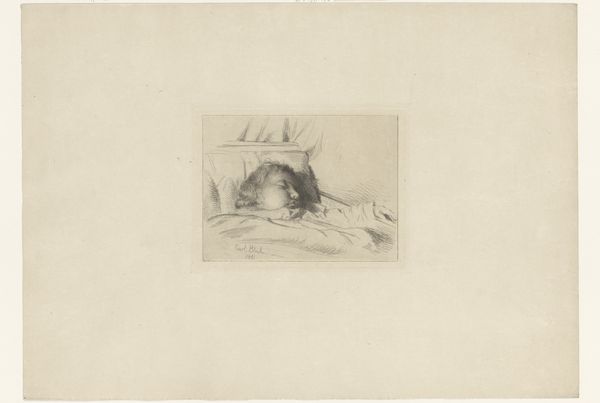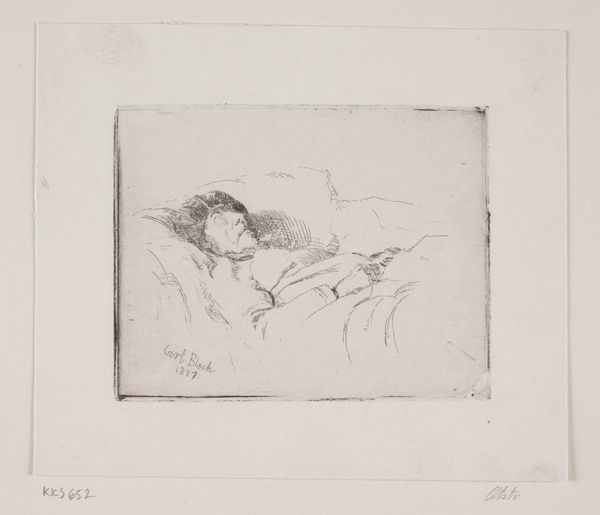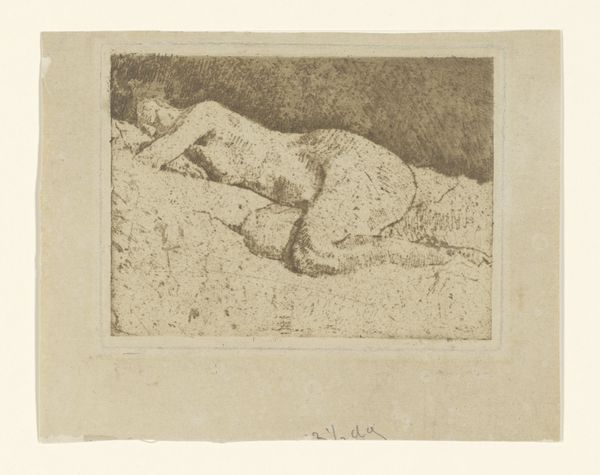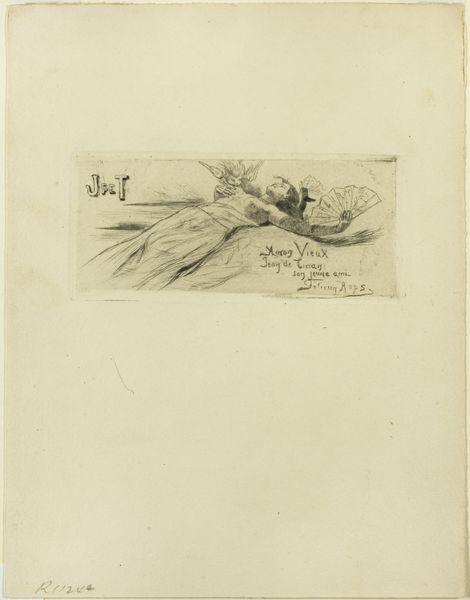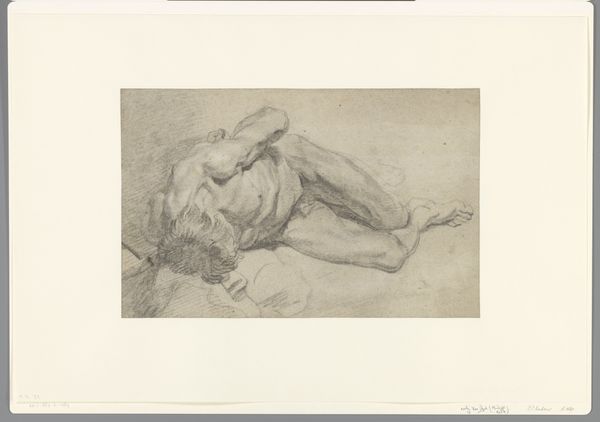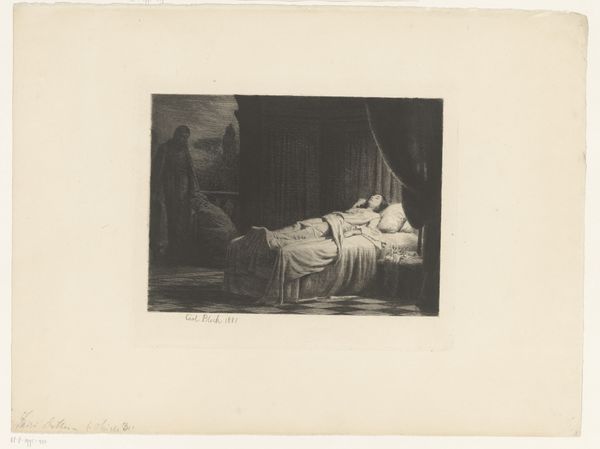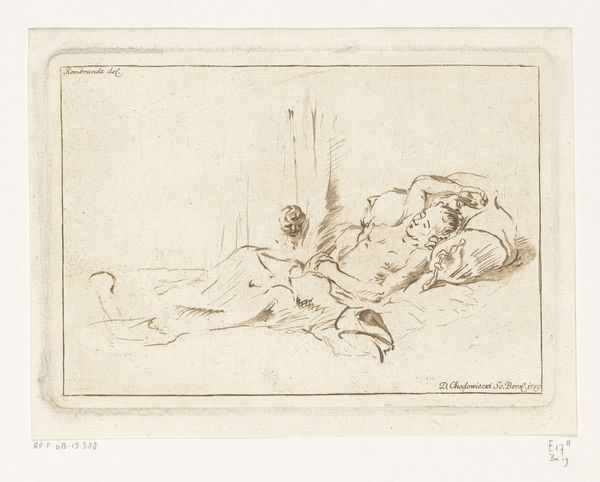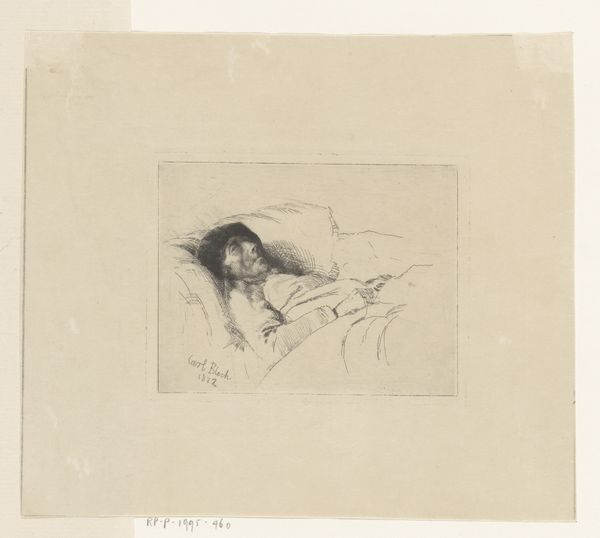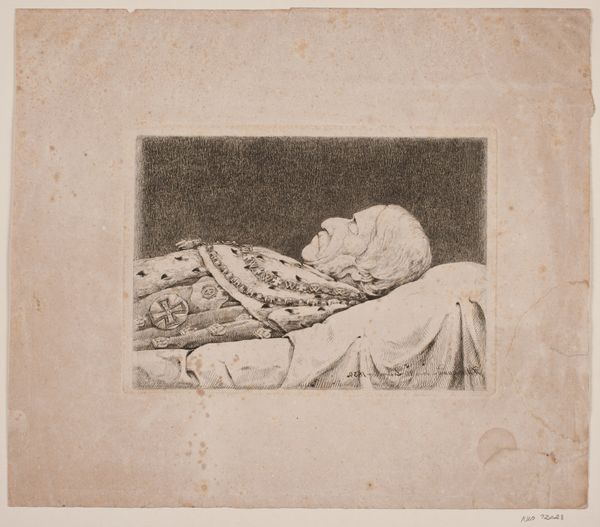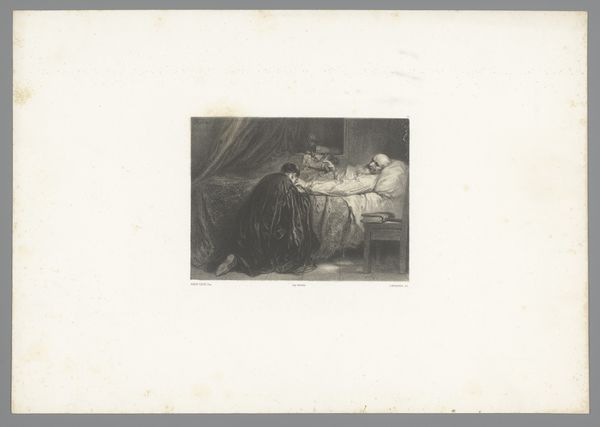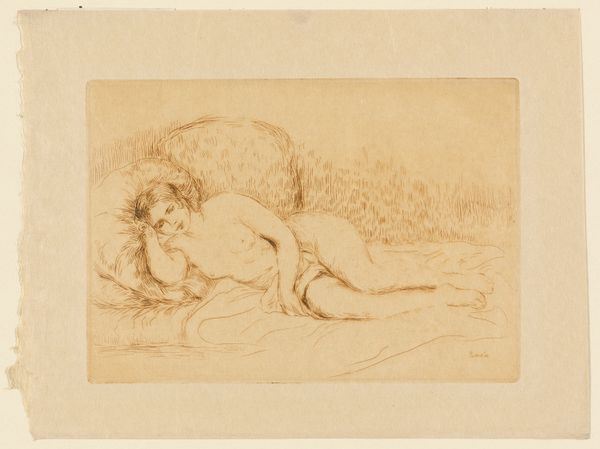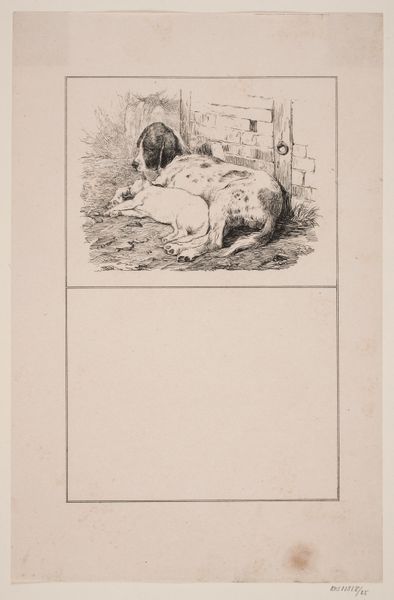
drawing, print, etching, paper
#
portrait
#
drawing
# print
#
etching
#
figuration
#
paper
#
nude
#
realism
Dimensions: 4 × 5 1/2 in.
Copyright: Public Domain
Curator: This is "Nude Lying Down," an etching by Auguste Delierre, created around 1900. It's currently part of the Charles Deering Collection at the Art Institute of Chicago. Editor: My immediate response is that this is a surprisingly intimate portrayal given the medium. The dense, dark hatching creates a tangible weight, grounding the figure in her domestic space. Curator: It's important to remember that the theme of the reclining nude has a long and often problematic history in art, especially considering the male gaze and its power dynamics. Delierre seems to engage with, or perhaps unintentionally perpetuate, some of those conventions. How do we grapple with that today? Editor: I see a deliberate engagement with the process of printmaking itself. The etching technique, with its reliance on acid and the resistance of the metal plate, results in a contrast, almost violent contrast. It seems fitting considering the theme. Curator: Certainly, the use of etching, traditionally associated with reproduction and distribution, adds layers to the narrative. One could even see it as commenting on the mass consumption and commodification of the female form in society. How does that intersect with Delierre's position as a male artist? Editor: The labor inherent in the printmaking process should be noted here too. The careful building up of tones by hatching - one can clearly see this labour. Moreover, the way the artist's hand worked across the metal and eventually created the texture and feel of the soft textile the model rests on, reveals its material history. Curator: Exactly. Consider the gendered division of labor within artistic production during this time. This challenges that idea, as etching has allowed the artist's creation to transcend beyond the physical boundaries that a singular work will normally reach. It democratizes the artwork, in a sense. Editor: And we also shouldn’t dismiss the importance of the paper as a raw material here either. The way this small printed square nests onto the soft, handmade sheet speaks a lot to the artist's intimate understanding of process, material, and output. Curator: So, viewing this piece through the lens of gender, power, and labor certainly complicates its surface appeal. But such discussions force us to reconsider our relationship with the image itself. Editor: Precisely. Looking through these considerations really reframes how we see this intimate scene. It has pushed me to consider just how significant both choice and labour have shaped the artwork, making me want to consider art history in terms of artistic materials too.
Comments
No comments
Be the first to comment and join the conversation on the ultimate creative platform.
